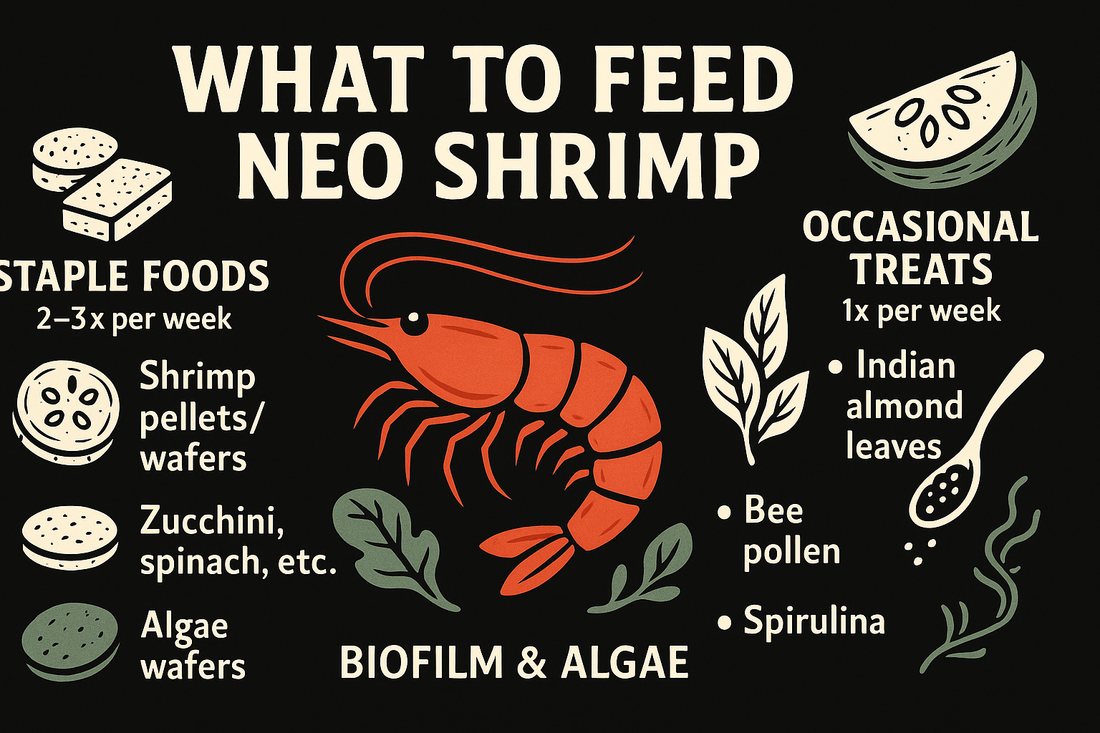
What do I feed, How often do I feed Neo Caridina shrimp?
Share
what should I feed my Neos?
Neo Caridina shrimp (Neos) thrive on a varied diet that mimics their natural grazing behavior. Here’s a breakdown of what you can feed them:
Staple Foods (2–3x per week):
• Shrimp-specific pellets/wafers(e.g., Bacter AE, Shrimp King Complete, Hikari Shrimp Cuisine)
• Algae wafers(break into small pieces)
• Blanched vegetables:
• Zucchini
• Spinach
• Kale
• Carrot
• Cucumber
(Blanch for 1–2 minutes, cool, and remove uneaten pieces after a few hours)
Occasional Treats (1x per week):
• Indian almond leaves (catappa leaves)– provides food, biofilm, and tannins for health
• Bee pollen– great protein and vitamins
• Spirulina powder– promotes color and immunity
• Snowflake food– soybean husks that break down slowly for long-term grazing
Natural Sources (daily grazing):
• Biofilm(encouraged by leaf litter, cholla wood, and natural substrate)
• Algae(especially green and brown algae on tank surfaces)
• Detritus(dead plant matter, mulm)
Important Feeding Tips:
• Feed tiny amounts– just enough for them to eat in 1–2 hours.
• Fast 1–2 days per week to prevent overfeeding and water quality issues.
• Rotate foodtypes to ensure balanced nutrition.
How often should I feed them?
You should feed your Neo Caridina shrimp (Neos) about 2–3 times per week, depending on these factors:
1. Tank size and biofilm availability:
• If your tank is mature with algae, biofilm, and decaying plant matter, feed less oftensince they’ll graze throughout the day.
• In newer or very clean tanks, feed more frequently (but lightly).
2. Amount of shrimp:
• A larger colony may need slightly more frequent or larger feedings.
3. Food type:
• Specialized shrimp food(e.g., shrimp pellets or wafers) should be removed after a few hours if uneaten.
• Blanched vegetables(like zucchini or spinach) can be left in for a few hours max.
• Biofilm and algaeare their primary natural diet and safest to rely on.
Tip: Watch how quickly they eat. If food is still there after 2–3 hours, reduce the amount next time.
